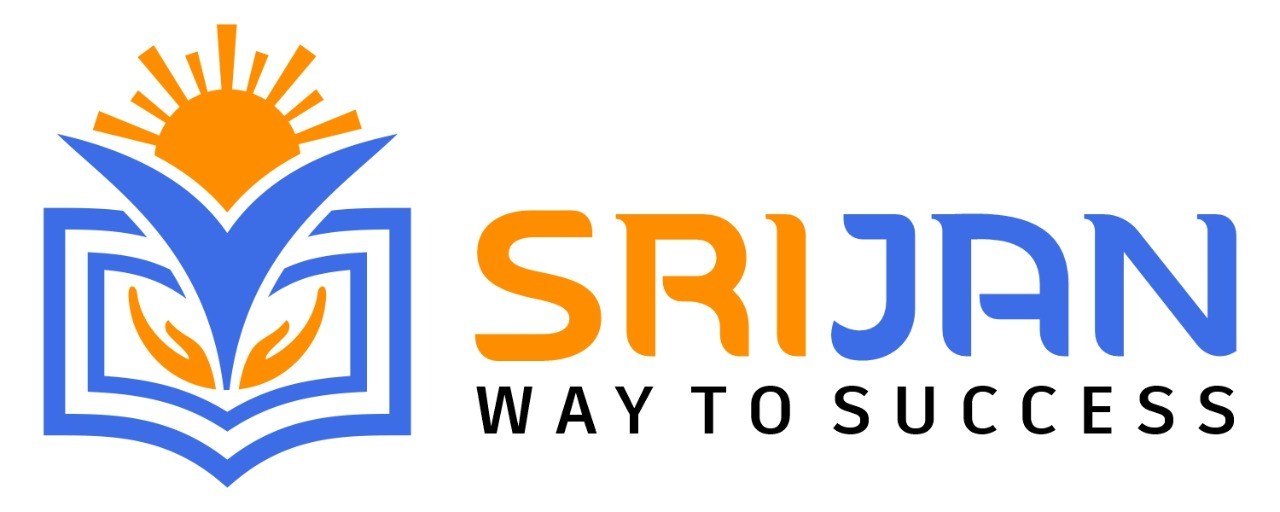Comprehensive SAP FICO Course in Delhi NCR
If you're looking to enhance your career as a financial accounting and controlling professional, enrolling in an SAP FICO course in Delhi NCR might help you open doors for success. We at Srijan Institute provide comprehensive training for SAP FICO, tailored for students, professionals, and all others interested in mastering this essential module of SAP ERP.
Our SAP FICO training in Noida and Delhi NCR, with practical training, hands-on projects, and expert guidance, will ensure that you gain the skills and confidence to succeed in your career. Whether you are a beginner or an experienced professional, our courses cater to all levels.
Why Choose Our SAP FICO Course in Delhi NCR
Our SAP FICO training in Noida and Delhi NCR is distinguished by industry-relevant curriculum, expert trainers, and flexible learning options. Here's what you can expect40 Hrs Instructor-led Training
- 45+ Hours of Instructor-Led Live Training: Engage with experienced trainers for real-time insights and support.
- Mock Interview Sessions: Prepare for job interviews with confidence through simulated interview practices.
- Hands-On Projects and Exercises: Apply what you learn in real-world scenarios for practical understanding.
- Flexible Schedules: Choose from various batches to fit your busy lifestyle.
- 24/7 Lifetime Access and Support: Revisit course material and receive ongoing assistance whenever needed.
- Certification and Job Assistance: Get certified and receive guidance to land your dream job
What Is Sap Fico:
SAP FICO is the name given to the financial accounting and controlling module in SAP ERP systems used by firms worldwide. It is critical in handling financial data and thus simplifies accounting functions
Key Function of Sap Fico?
- General Ledger Accounting: All financial transaction data is stored in one central location.
- Accounts Payable and Receivable: Keep track of incoming and outgoing payments in an efficient way.
- Asset Accounting: All fixed assets can be tracked.
- Bank Accounting: Handles bank transactions as well as reconciliation
- Cost Element and Cost Center Accounting: Analyze and control costs for better budgeting.
- Profit Center Accounting: Monitor profitability across various business areas.
Who Should Enroll in the sap fico course:
This SAP FICO course in Delhi NCR is open to individuals with different experience levels. To benefit most from the training, take the following prerequisites
- General knowledge of accounting principles
- Familiarity with SAP software is advantageous but not required
- An educational background in finance, accounting, or business administration.
- Knowledge of business processes.
- Computer skills
No matter whether you're fresh from college, a professional already in the field of finance, or looking for a change in career, this course will help you.
Role of an sap fico consultant
Becoming an SAP FICO consultant leads you to exciting opportunities for your career. As a consultant, your roles and responsibilities include
- Analyze Business Requirements: Understand what the clients want and transform that into SAP solutions.
- Configuration of SAP FICO Modules: Set up and customize SAP modules to satisfy the organizational goals
- Testing and Training: Ensure proper functioning of the system, training end-users.
- Troubleshooting and Support: To address all problems and provide ongoing support for the system.
- Documenting Processes and Procedures: Complete documentation for reference purposes and compliance
Benefit of the sap fico training?
With the SAP FICO training in Noida and Delhi NCR, you get all that would make you succeed in job markets. Here are some of the most important reasons for joining our course:
1.Lucrative Job Opportunities?
A: SAP FICO consultants are in significant demand in every industry for their services. This allows high career prospects and high payment scale jobs.
2. Career Advancement and Salary Hike?
A: SAP FICO certification allows you to get promotions, and salary raises with current employers
3. Increased Productivity?
A: Know how to optimize financial processes and add value to your organization's efficiency.
4. Better Decision-Making Skills?
A: Learn data management and analysis to make better business decisions.
5. Hot Skills?
A:SAP FICO is a hot skill in the global job market, giving you an edge over others.
Flexible Learning Modes
To cater to diverse needs, we have various learning modes for our SAP FICO training in Delhi NCR
Instructor-Led Training: Interacting classes with live support
Self-Paced Training: Learning at your own pace through pre-recorded material
Online Training: Accessible from any place having internet connectivity.
Certification Support: For achieving SAP FICO certification
Course Features
This is what makes our SAP FICO training in Noida and Delhi NCR unique
Real-world project work for hands-on learning.
Step-by-step preparation to pass certification exams.
Lifelong access to course materials and resources
Opportunities to network with professionals in the industry
The fee for SAP FICO(Financial Accounting and Controlling) training can vary depending on several factors such as the location, duration of the course, training format, and level of expertise. SAP offers various training options for FICO, including instructor-led courses, e-learning courses, and virtual live classrooms.
For More details you can Register
SAP FICO(Financial Accounting and Controlling) Certification FAQ's:
1. What is SAP FICO Certification?
A: SAP FICO Certification is a professional certification program that verifies a candidate's knowledge and skills in the SAP Financial Accounting and Controlling (FICO) module. It is designed to test a candidate's ability to implement and configure SAP FICO solutions for various business processes.
2. Who is eligible for SAP FICO Certification?
A: Any individual with a minimum of two years of experience in SAP FICO implementation or support projects can apply for SAP FICO Certification. However, it is recommended that candidates have a basic understanding of financial accounting and controlling principles.
3. What are the benefits of SAP FICO Certification?
A: SAP FICO Certification can help candidates enhance their knowledge and skills in SAP FICO, improve their career prospects, and increase their earning potential. It also validates their proficiency in SAP FICO, which can boost their credibility among employers and clients.
4. What is the format of the SAP FICO Certification Exam?
A: The SAP FICO Certification Exam consists of 80 multiple-choice questions and lasts for 180 minutes. The passing score for the exam is 60%.
5. What topics are covered in the SAP FICO Certification Exam?
A: The SAP FICO Certification Exam covers various topics related to SAP Financial Accounting and Controlling, including General Ledger Accounting, Accounts Receivable, Accounts Payable, Asset Accounting, Financial Closing, Cost Center Accounting, Profit Center Accounting, and Internal Orders.
6. How can I prepare for the SAP FICO Certification Exam?
A: Candidates can prepare for the SAP FICO Certification Exam by attending SAP FICO training courses, reading SAP FICO books and documentation, and taking SAP FICO practice exams. It is also recommended that candidates gain hands-on experience in implementing and configuring SAP FICO solutions.
7. How much does SAP FICO Certification cost?
A: The cost of SAP FICO Certification varies depending on the country and region. In general, the cost ranges from $500 to $1,500.
8. How long is SAP FICO Certification valid?
A: SAP FICO Certification is valid for two years from the date of issue. After that, candidates are required to renew their certification by taking a recertification exam or attending SAP FICO training courses.
9. What is the process for SAP FICO Certification renewal?
A: To renew their SAP FICO Certification, candidates must take a recertification exam or attend SAP FICO training courses. The recertification exam consists of 40 multiple-choice questions and lasts for 90 minutes. The passing score for the exam is 60%.
10. How can I register for SAP FICO Certification?
A: Candidates can register for SAP FICO Certification on the SAP Training and Certification website. They must create an account and provide their personal and professional information, including their work experience and educational background. They can then select the certification exam they want to take and pay the registration fee.
SAP FICO(Financial Accounting and Controlling) Certification:
SAP FICO (Financial Accounting and Controlling) is a module of SAP ERP (Enterprise Resource Planning) system that deals with the financial and accounting processes of an organization. SAP FICO certification is a validation of a professional's knowledge and skills in SAP FICO module.
The SAP FICO certification exam consists of two levels:
Associate Level Certification: This is the entry-level certification, which verifies a candidate's basic knowledge of SAP FICO module.
Professional Level Certification: This is the advanced level certification, which verifies a candidate's expertise in SAP FICO module.
To become certified, a candidate must pass the respective certification exam, which is conducted by SAP AG. SAP FICO certification requires a thorough understanding of financial accounting principles and knowledge of the SAP ERP system. It is recommended that candidates have at least 2 years of practical experience in SAP FICO module before attempting the certification exam.
SAP FICO certification can benefit professionals by enhancing their career prospects, increasing their knowledge and skills, and validating their expertise in SAP FICO module. It can also help organizations to identify qualified professionals for their financial and accounting processes.
SAP FICO(Financial Accounting and Controlling) Curriculum:
ScmPart A – Financial Accounting
Chapter 1 – Introduction to SAP R/3
1. Introduction to ERP, Advantages of SAP over other ERP Packages
2. Introduction to SAP R/3 FICO
3. Landscape and multi-client concept
4. Transport request creation, modification, status, types, release, transport
5. Difference between R/1, R/2 and R/3
6. Types of messages
7. 4 C’s
Chapter 2 – Financial Accounting Basic Settings (Organization Structure)
1. Definition of company
2. Definition of company code
3. Assignment of the company to company code
4. Definition of business area
5. Define chart of accounts
6. Assign chart of accounts to company code
7. Define account groups
8. Define Retained earnings account
9. Define Fiscal year variant and shortened fiscal year
10. Assign fiscal year variant to company code
11. Define field status variants
12. Assignment of field status variant to company code
13. Definition of tolerance groups for GL accounts
14. Definition of tolerance groups for employees
15. Assignment of tolerance groups to users
16. Define document types
17. Define posting period variant
18. Assign posting period variant to company code
19. Open/close posting period variant
20. Global parameters
21. Organization structure in EC01
22. Sort key configuration in OB16
Chapter 3 – General Ledger Accounting
1. Creation of General Ledger Master FS00/FSP0/FSS0 (with and without reference)
2. Display/Change/Block/Unblock of general ledger master
3. Document Entry posting (F-02/FB50/FB01) and posting with reference
4. Display and change of documents, editable fields
5. Display of GL balances reports
6. Display GL account line items report
7. Parked documents
8. Hold documents
9. Creation of Sample Document and postings with sample documents
10. Handling prepaid expenses (prepaid insurance and accrued income) with recurring documents
11. Changing line layouts for the display of GL line items, variant creation, dynamic selections
12. Reversal of individual documents, mass reversal, reversal of cleared items, and reversal of accrual
documents
13. Accrual and Deferral document
14. Defining Exchange Rate types and Translation
15. Open item management, Types of clearing – standard, partial, residual
16. Account clearing F-03 and posting with clearing F-07 differences with GL tolerances OBXZ
17. GL open item and cleared item tables, transaction, and master data table
18. Interest calculations on term loans
19. Foreign currency revaluation for open items (F-07) and balances FAGL_FC_VAL, Posting Realized gains/losses
on open items
20. Account assignment model FKMT
21. Mass changes in line item report
22. Types of chart of accounts and reporting F.01
23. Options from the selection parameter screen, editing options
Chapter 4 – Accounts Payable
1. Creation of vendor account groups
2. Creation of number ranges for vendor master records
3. Assignment of number ranges to vendor account groups
4. Creation of tolerance group for vendors
5. Creation of vendor master XK01/FK01/MK01 (display/change/block/unblock of vendor master),
sensitivefields in master data, and confirmation FK08
6. Posting of vendor transactions (invoice posting, payment posting, credit memo), Account clearing,
andposting with clearing on vendor
7. Settings for advance payments to parties (down payment) and clearing of down payment against
invoices(special GL transactions)
8. Vendor tolerances gain/loss postings OBXL
9. Creation of payment terms and cash discounts with installments
10. Automatic payment program configuration with SEPA format
11. Bank master data and house banks
12. F110 execution – main bank posting from F110 and bank clearing account posting from F110 and
relatedtables
13. DME files creation in XML and txt format and understanding DME structure in DMEE with GDFF file with
AL11 path
14. Payment advice generation, payment advice by email, payment summary generation
15. Reversal of payment documents
16. Vendor clearing – standard, partial and residual
17. Check payment method and create checks manually F-58 and automatically and printing
18. Creation of check lots and maintenance of check register
19. Check encashment dates
20. Cancellation of unissued checks and issued checks
21. Creation of void reasons
22. Cancel payment, delete for payment run
23. Deleting manual checks and voided checks
24. Real-time scenarios on APP - partial payments, foreign currencies
25. Real-time scenarios on APP – payment method supplement, partner bank type, payment from
multiplehouse banks to different invoices
26. Intercompany payments and trading partner – manual and automatic
27. Tables and reports in AP and APP (REGU*)
28. ACH/Direct debit
29. Payment order
30. Foreign currency revaluation on vendor and differences between realized and unrealized gain/loss
31. Different payment methods to vendors including Idocs
Chapter 5 – Accounts Receivable
1. Creation of customer account groups
2. Creation of number ranges for customer master records
3. Assignment of number ranges for customer account groups
4. Creation of tolerance group for customers
5. Creation of customer master XD01/FD01/VD01 (display/change/block/unblock of vender master),sensitive
fields
6. Posting of customer transactions (sales invoice posting, payment posting, debit memo), Account
clearingand posting with clearing
7. Settings for advance payment from parties (down payment)
8. Configuration of settings for dunning and dunning letters emailing to customers
9. Cash discounts
10. APP configuration for customers
11. Customer clearing – standard, partial and residual
12. Master data and transaction tables (open and cleared item) and reports
13. Customer line item interest calculation
14. Customer tolerances OBXL
15. Invoice or statement printing/correspondence
Chapter 6 – Bank Accounting
1. Electronic bank statement (EBS): Configuration and execution MT940 with the main bank and alternative
bank account
2. EBS – Bank charges, Bank interest, and tax code posting with search string
3. Auto Lockbox: Configuration and execution
4. SAP query
5. Cash journal
Chapter 7 – Data Migration
1. LSMW (asset, vendor, customer, and GL master data)
2. BDC (transaction data)
Chapter 8 – Asset Accounting
1. Defining chart of depreciation
2. Creation of 0% tax codes for sales and purchased
3. Assignment of chart of depreciation to company code
4. Defining account determination
5. Definition of screen layout rules
6. Definition of number ranges for asset classes
7. Integration with General Ledger & Posting rules
8. Defining Depreciation key
9. Definition of multilevel methods
10. Definition of period control methods
11. Creation of main asset master records
12. Creation of sub-asset master records
13. Acquisition of fixed assets
14. Sale of fixed assets
15. Transfer of assets
16. Scrapping of assets,
17. Depreciation run
18. Line item Settlement of assets under construction of capital work in progress
19. Year-end activities
20. Asset mass changes
21. Tables and reports
22. Asset history report, Asset explorer, and Asset documents
23. Asset impairment/revaluation
24. Master data and transaction data table
25. Asset shut down
26. Manual depreciation
27. Unplanned depreciation/missed depreciation
28. Depreciation with a repeat run
29. Asset evaluation groups
Chapter 9 – New General Ledger Accounting
1. Parallel ledgers
2. Document splitting
Chapter 10 – Reports
1. Financial statement version (FSV)
Part B – Controlling
Chapter 1 – Basic Settings for Controlling
1. Defining Controlling Area
2. Defining Number ranges for Controlling Area
3. Maintain Planning versions
Chapter 2 – Cost Element Accounting
1. Creation of primary cost elements from FI and CO
2. Manual and automatic creation of cost elements
3. Display of cost element master records
4. Change cost element master records
5. Primary cost element categories
6. Secondary cost element categories
7. Default account assignments
Chapter 3 – Cost Center Accounting
1. Creation of Cost Centers and cost center groups
2. Display, change cost center master records
3. Creation of cost center groups
4. Actual posting to cost centers
5. Reposting of co-line items
6. Cost center hierarchy
7. Planning for cost centers
8. Actual and variance report
Chapter 4 – Period – end activities
1. Statistical Key figure
2. Creation and execution of Distribution Cycle with/without SKF
3. Creation and execution of Assessment cycles with/without SKF
4. Creation and execution of Actual periodic reposting
Chapter 5 – Internal Orders
1. Defining order types
2. Creation of internal order master records
3. Display internal order master records
4. Change internal order master records
5. Postings to internal orders
6. Planning for internal orders
7. Reposting co-line items for internal orders
8. Repost of costs for internal orders
9. Report of Variance analysis for internal orders
10. Creation of real internal orders
11. Posting of business transactions to real orders
12. Definition of allocation structures
13. Definition of settlement profiles
14. Definition of planning profiles
Settlement of real internal orders
16. Budgeting and availability control
17. Maintain number ranges for budgeting
18. Define tolerances for availability control
19. Budget manager
20. SAP business workplace
Chapter 6 – Profit Center Accounting
1. Basic Settings for Profit Center Accounting
2. Creation of Dummy Profit Centers
3. Maintenance of control parameters for actual postings
4. Maintaining planning versions for-profit centers
5. maintaining the number ranges for-profit center documents
6. Creation of profit center master records
7. Display of profit center master records
8. Changing the profit center master records
9. Creation of revenue cost elements
10. Automatic Assignment of Revenue elements for Profit Centers
11. Assignment of profit centers in cost center master records
12. Creation of account groups in profit center accounting for planning
13. Planning for profit and loss account items
14. Planning for balance sheet items
15. Posting of transactions into profit centers
16. Generating the variance reports for profit and loss account items
17. Generating the variance reports for balance sheet items.
Chapter 7 – Profitability Analysis
1. Maintaining the operating concern
2. Define profitability segment characteristics
3. Assignment of controlling area to operating concern
4. Activating the profitability analysis
5. Define number ranges for actual postings
6. Mapping of SD conditions types to COPA value fields
7. Report painter - Creation and execution of reports in CoPA with Sales, CoGS, and Discount and
Freightvalue fields
8. PA transfer structure
9. CoPA document generation from FI
10. CoPA assessment
Part C – Product Costing
Chapter 1 – Product Cost Planning
1. Creation of bill materials
2. Creation of activity type master records
3. Planning for activity hours
4. Activity type price calculation
5. Creation of work center master records
6. Creation of routings
7. Defining cost sheet (overhead structures)
8. Assignment of cost sheet to costing variant
9. Creation of cost estimate with quantity structure
10. Marking
11. Releasing and price change document
12. Creation of cost estimate with quantity structure
13. Creation of cost estimate without quantity structure
14. Cost estimate for multiple materials
15. Cost estimate reorganization
Part D – Integration
Chapter 1 – Integration of financial accounting with materials management:
1. Definition of organizational units in materials management i.e. plant, storage location and purchase
organization
2. Assignment of organizational units to each other
3. Definition of tolerance groups for purchase orders
4. Definition of tolerance groups for goods receipt
5. Definition of tolerance groups for invoice verification
6. Definition of vendor-specific tolerances
7. Creation, display, and change of material master record
8. Creation of plant parameters
9. Maintenance of posting periods for materials management
10. Maintenance of parameters for invoice verification
11. Maintenance of plant parameters for inventory management and physical inventory
12. Definition of attributes for material types
13. Assignment of GL accounts for material transactions in financial accounting (Integration of MM with FI)
14. Creation of purchase order, posting of goods receipt, invoice verification, and Goods issue for production
with planned freight FRA2 and unplanned delivery costs and discounts
15. Price control – standard and moving average with postings
16. Price differences posting to PRD
17. GR/IR clearing from F.13 with automatic clearing (automatic clearing criteria OB74)
18. Stock report MB5B
19. Invoice reversal MR8M
20. MM Pricing procedure
Chapter 2 – Integration of financial accounting with sales and distribution:
1. Definition of sales organization
2. Definition of distribution channels
3. Definition of divisions
4. Assignment among various organizational units in SD
5. Definition of partner functions
6. Definitions of the shipping points and loading points
7. Definition of pricing procedures
8. Determining the shipping points
9. Determining the pricing procedures
10. Maintenance of SD condition types
11. Maintenance of condition records
12. Assignment of GL accounts for sales transactions (integration of FI with SD)
13. Creation of sales order
14. Initialization of stock 15. Posting the delivery of goods
16. Creating the sales invoice.
17. SD pricing procedure Discounts K007, Freight condition types
Chapter 3 – Validations & Substitutions
1. Line item level
2. Header level
Chapter 4 – Sales Tax
1. Input tax
2. Output tax
3. Sales tax procedure
Chapter 5 – Year-End closing and month-end closing
1. GL balances carry forward
2. AP and AR balances carry forward
3. Special period posting
Concept of Trading partner
MASS maintenance (MASS)
Job scheduling in SM37
Idocs:
1. Structure of an Idoc
2. AL11 path, Uploading and downloading files from AL11
3. Testing and copying an Idoc
4. Reprocessing an Idoc
Chapter 6 – ASAP Methodology
1. Phases in ASAP methodology
2. Project plan
Chapter 7 – Real-time Documentation
1. Business Blueprint (BBP)
2. Estimate
3. High-level design
4. Functional specifications
5. Test script
6. UAT
7. Agile methodology
Note: The specific curriculum for SAP FICO training may vary depending on the needs of the trainees/Corporate Client and the objectives of the training program.
SAP FICO(Financial Accounting and Controlling) Interview Questions & Answers:
1. What is SAP FICO?
A: SAP FICO is a financial accounting and controlling module that helps businesses in managing their financial transactions, accounting, and reporting activities.
2. What is the difference between FI and CO in SAP?
A: FI stands for Financial Accounting, while CO stands for Controlling. Financial Accounting focuses on recording and managing financial transactions, whereas Controlling focuses on analyzing financial information to help in decision-making.
3. What are the sub-modules of SAP FICO?
A: The sub-modules of SAP FICO are General Ledger Accounting (FI-GL), Accounts Receivable (FI-AR), Accounts Payable (FI-AP), Asset Accounting (FI-AA), Cost Element Accounting (CO-OM-CEL), Cost Center Accounting (CO-OM-CCA), Profit Center Accounting (EC-PCA), and Internal Orders (CO-OM-OPA).
4. What is the purpose of a chart of accounts in SAP FICO?
A: A chart of accounts is a list of all the general ledger accounts used by an organization to record its financial transactions. It helps in classifying and grouping the financial transactions and also provides a framework for the preparation of financial statements.
5. What is a financial statement version in SAP FICO?
A: A financial statement version is a collection of financial statement items that are used to prepare financial statements. It provides a template for presenting the financial data in a specific format that is required by the organization.
6. What is the difference between a balance sheet and a profit and loss statement?
A: A balance sheet shows the financial position of an organization at a specific point in time, whereas a profit and loss statement shows the financial performance of an organization over a period of time.
7. What is a withholding tax in SAP FICO?
A: A withholding tax is a tax that is deducted at the source from payments made to vendors and employees. It is deducted by the payer and remitted to the tax authorities on behalf of the payee.
8. What is a tolerance group in SAP FICO?
A: A tolerance group is a group of users who have the authority to approve or reject transactions that exceed certain predefined limits. The limits can be set for various types of transactions, such as invoice postings or payment transactions.
9. What is a cost center in SAP FICO?
A: A cost center is a unit within an organization that incurs costs and contributes to the organization's overall expenses. It can be a department, a project team, or any other entity that can be attributed with costs
10. What is the purpose of automatic payment programs in SAP FICO?
A: Automatic payment programs in SAP FICO automate the payment process by generating payment documents, such as checks or electronic transfers, based on predefined criteria. This helps in reducing manual effort and improving the efficiency of the payment process.
11. What is the difference between a vendor and a customer in SAP FICO?
A: A vendor is a party who supplies goods or services to an organization, while a customer is a party who purchases goods or services from an organization. In SAP FICO, vendors are managed through the Accounts Payable (FI-AP) sub-module, while customers are managed through the Accounts Receivable (FI-AR) sub-module.
12. What is the purpose of the Accounts Payable (FI-AP) sub-module in SAP FICO?
A: The Accounts Payable (FI-AP) sub-module in SAP FICO manages the organization's accounts payable transactions, including invoice verification, payment processing, and vendor master data maintenance.
13. What is the purpose of the Accounts Receivable (FI-AR) sub-module in SAP FICO?
A: The Accounts Receivable (FI-AR) sub-module in SAP FICO manages the organization's accounts receivable transactions, including customer invoicing, payment receipts, and customer master data maintenance.
14. What is the purpose of Asset Accounting (FI-AA) sub-module in SAP FICO?
A: The Asset Accounting (FI-AA) sub-module in SAP FICO manages the organization's fixed assets, including acquisition, depreciation, retirement, and transfer of assets.
15. What is the purpose of Profit Center Accounting (EC-PCA) sub-module in SAP FICO?
A: The Profit Center Accounting (EC-PCA) sub-module in SAP FICO enables organizations to analyze the profitability of individual business segments, such as departments, product lines, or sales regions.
16. What is a company code in SAP FICO?
A: A company code is a legal entity within an organization that is responsible for its own financial accounting transactions, such as recording and reporting financial data.
17. What is the purpose of a controlling area in SAP FICO?
A: A controlling area is a unit within an organization that is responsible for controlling activities, such as cost center accounting, profit center accounting, and internal orders.
18. What is a house bank in SAP FICO?
A: A house bank is a financial institution that is authorized to manage the organization's bank accounts in SAP FICO. It helps in managing bank transactions, such as payments, receipts, and bank reconciliations.
19. What is the purpose of a profit and cost center hierarchy in SAP FICO?
A: A profit and cost center hierarchy in SAP FICO provides a structure for organizing and analyzing financial data at different levels of aggregation. It enables organizations to report on their financial performance and make informed decisions based on the financial data.
20. What is the purpose of a year-end closing in SAP FICO?
A: A year-end closing in SAP FICO is a process of finalizing financial transactions and preparing financial statements for the year-end reporting period. It includes activities such as posting depreciation, adjusting entries, and carrying forward balances to the new fiscal year.
Participants will have 24/7 access to our online lab, providing hands-on experience with SAP FICO tools and scenarios.
This includes server access to S/4 HANA 2023 for 1 year, ensuring you have ample time to practice and apply your skills in a real-world environment.
With this extended access, you can work on projects, explore advanced features, and solidify your understanding of SAP FICO in the latest SAP S/4 HANA version.














